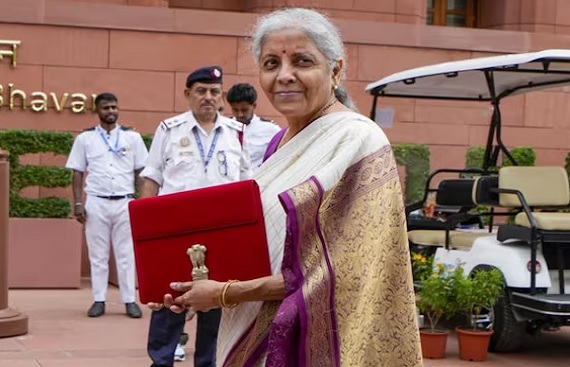Union Budget FY26: Fiscal Consolidation Meets Welfare and Growth Goals
By
siliconindia | Tuesday, 14 January 2025, 07:22 Hrs

According to a recent report by Goldman Sachs, the Union Budget for FY26, scheduled to be presented on February 1, is expected to concentrate on fiscal consolidation but increase allocations for rural development, welfare programs, and subsidies.
The report further stresses the twin challenge for policymakers: managing India's elevated public debt and fiscal deficit levels vis-à-vis other emerging markets while addressing growth priorities. The government is expected to target a fiscal deficit of between 4.4% and 4.6% of GDP for FY26, lower than the 4.9% FY25 target. This reduction shows commitment to fiscal consolidation, motivated by the need to control the public debt-to-GDP ratio.
Notes the Goldman Sachs economists that fiscal consolidation is required; however, in FY26 it could become an economic growth drag. A slowdown of public capex is also featured wherein growth in capex is anticipated to align or fall below the nominal GDP growth rates. Reportedly, this is the point where the speediest phase of expansion of public capex is past us, signifying a restrained approach toward investments in infrastructure.
Welfare expenditure is expected to stay in track with pre-pandemic growth at around 3% of GDP in FY26. Nonetheless, there will likely be an increased reallocation to rural development and welfare-related schemes as a result of a reduced majority, signaling a changed priority for spending.
The report also looks at India's cyclical growth slowdown, attributing it to fiscal tightening and slower credit growth due to the Reserve Bank of India's macro-prudential measures that are aimed at controlling consumer loans. However, the government still has some elbow room to increase current expenditures in FY25 because of robust tax collections, especially direct taxes.
The upcoming budget is likely to make a broader statement on the government's long-term economic vision toward 2047, focusing on job creation through labor-intensive manufacturing, credit support for MSMEs, and rural housing initiatives. Efforts to stabilize the domestic food supply chain and manage inventory to curb price volatility are also expected to feature prominently.
Such a budget will also outline a roadmap for the sustainability of public debt, while simultaneously ensuring energy security and facilitating the transition to cleaner energy. This well fits into India's overall goals for climate action and sustainability.
Goldman Sachs foresees the rural welfare, transfer schemes, and subsidies being the central element of the budget that will continue to support the development of rural areas and bring socioeconomic disparities in check. Fiscal prudence is crucial for balancing the growth-friendly measures that would define the economy in FY26 and beyond.
Thus, India is moving in a proper way by controlling the economy at FY26 by implementing sustainable growth with fiscal stability that depicts its nuance about the expenditure and investment from the Union Budget.
